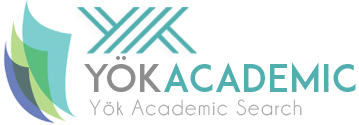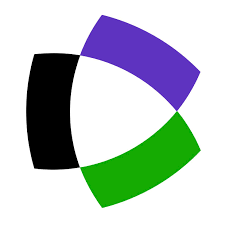Research Articles
Derleme Makaleleri [tr] Review Articles [en]
Issue Editorial Board

Issue Reviewers
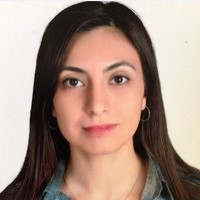
Dr. Duygu Arıkan İspir has been working as a Research Assistant at Konya Technical University since 2019. She completed her Ph.D. on deep learning techniques for building classification. Her research focuses on deep learning, land cover classification, air pollution, urban heat islands, wetland change detection, and drought analysis, aiming to develop AI-based approaches for solving environmental and urban challenges.



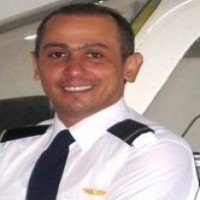
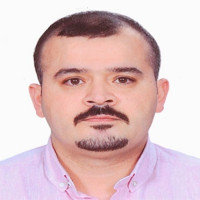

Aim & Scope
Turkish Journal of Unmanned Aerial Vehicles (TUAV) is a peer-reviewed journal that publishes studies on UAV development, usage, and geosciences. The journal focuses on the design and applications of unmanned aerial vehicles (UAVs), including Unmanned Aerial Vehicle Systems (UAVs) and Remotely Piloted Aircraft Systems (RPAS), among others. Contributions related to unmanned underwater/surface vehicles and unmanned ground vehicles are also welcome.
The journal aims to:
Present national and international developments in UAV applications to scientists in the fields of Geomatics, Geology, Environmental, Mining, Urban Planning, and Agricultural Engineering, as well as Archaeology and Architecture.
Strengthen and accelerate knowledge and experience sharing among scientists, researchers, engineers, and other practitioners involved in direct or indirect UAV-related activities by providing an easily accessible, broad-based discussion platform.
Contribute to initiating and developing inter-institutional collaborations that are crucial for solving professional issues more effectively, thereby playing a role in Turkey’s technological and economic advancement.
Encourage the development of Turkish as a scientific language in the UAV field while minimizing the use of foreign terminology.
The journal accepts and publishes original research articles, review papers, technical notes, case studies, short reports, and letters to the editor after peer review and editorial approval. Submitted manuscripts that comply with the journal’s writing guidelines are sent for peer review by the editorial board.
Turkish Journal of Unmanned Aerial Vehicles (TUAV) implements a double-blind peer review process. The decision to publish a manuscript is made by the Editorial and Publication Board based on the reviewers’ evaluations. Submitted manuscripts, whether accepted or rejected, are not returned to the authors. The responsibility for the scientific, professional, legal, and ethical aspects of published articles lies with the authors. The copyright of published articles belongs to the journal, and they cannot be reproduced without proper citation.
To facilitate scientific communication among researchers, original and previously unpublished manuscripts are accepted in Turkish, but all Turkish manuscripts must include an English abstract.
Article Types
Research Article
Papers presenting original research findings and conclusions.
Review Article
Papers summarizing a sufficient number of scientific studies, evaluating the topic based on the latest knowledge and technology, and comparing and interpreting the findings.
Short Communication
Papers highlighting significant findings of a study or describing a new method or technique.
Copyright transfer for all manuscripts is obtained by sending a Copyright Transfer Form to the authors. Manuscripts without a submitted Copyright Transfer Form are not processed. Once a manuscript is accepted for publication, no further additions or modifications can be made by the authors.
Each manuscript is reviewed by at least two referees for both format and content. Accepted manuscripts are typeset and then sent to the authors for a final review before printing. The authors are responsible for any errors found in the published manuscript. If an error originates from the editorial office, a correction may be published.
Scope of the Turkish Journal of Unmanned Aerial Vehicles (TUAV)
- History of UAVs, Legal and Regulatory Status in Turkey and Worldwide
- UAV Production and Export
- Military Applications of UAVs (Air, Naval, and Land Forces)
- Use of UAVs in Conventional and Modern Warfare
- UAV Threats and Security Management
- UAV Sensors
- Augmented Reality and Virtual Reality Applications with UAVs
- Fundamental UAV Applications
- Fire Monitoring with UAVs
- Documentation Studies with UAVs
- UAV Photogrammetry and Remote Sensing with UAVs
- UAV LiDAR and Its Applications
- Forestry Applications with UAVs
- Highway Projects with UAVs
- Geographic Information Systems (GIS) Applications with UAVs
- Industrial Measurements with UAVs
- Deformation and Landslide Measurements with UAVs
- Mining Surveys with UAVs
- Urban Planning and Transportation Studies with UAVs
- Precision Agriculture Applications with UAVs
- All Multidisciplinary Studies Conducted Using UAVs
Author Guidelines
For Authors
Manuscripts submitted to the journal must meet the following criteria:
- Research studies containing original scientific findings
- Studies that present practical applications with a scientific approach
- Review articles that comprehensively evaluate significant developments in a specific field
Manuscripts must be uploaded to the system electronically via the provided link.
These manuscripts cannot be published elsewhere and cannot be presented as conference papers without the approval of the editorial board. The entire manuscript or any part of it cannot be used elsewhere without proper citation. The authors must reach a mutual agreement on the order of their names in the manuscript.
Writing Guidelines
Manuscripts must be written in accordance with international scientific writing standards. Authors can submit their manuscripts in an editable Word format (A4 size, without adhering to a specific template). Figures and tables must be included within the text.
Authors are free to submit their manuscripts as long as they comply with the specified guidelines.
Files Required for Submission
1. Plagiarism Report
- As per the editorial decision made in 2017, all manuscripts must be submitted with a plagiarism report (e.g., iThenticate, Turnitin, etc.).
- If the plagiarism report is not included, the editorial board reserves the right to check for plagiarism using iThenticate and reject the manuscript outright.
- The journal secretariat can generate plagiarism reports for authors who are unable to obtain one.
2. Copyright Transfer Form (doc)
- The copyright transfer agreement must be completed and signed using the form available on the journal’s website.
- The signed Copyright Transfer Form must be scanned and uploaded as a PDF file.
- Manuscripts without a submitted Copyright Transfer Form will not be processed for publication.
3. ORCID ID Requirement
- All authors must have an ORCID ID.
- ORCID ID information must be entered into the system when submitting the manuscript.
- Authors can fill out the ORCID ID Form available on the journal’s website and upload it during submission.
4. Reviewer Suggestion Form (optional)
Authors may recommend potential reviewers for their manuscript by submitting the Reviewer Suggestion Form (doc).
Contact Information
Dr. Ali ULVİ (Editor)
📞 +90-532-573-9676
✉ Email: tiha@mersin.edu.tr / aliulvi@mersin.edu.tr
Formatting Guidelines
Title
- Font: Palatino Linotype, 12 pt, Bold, Left-Aligned
- Capitalization Rule: The first letter of each word must be capitalized, except for prepositions.
- Abbreviations: All uppercase
Author Names & Affiliations
Name Surname¹, Name Surname², Name Surname³
- ¹University, Faculty, Department, City, Country
- ²University, Faculty, Department, City, Country
- ³University, Faculty, Department, City, Country
Abstract (Turkish - ÖZET)
- Font: Palatino Linotype, 8 pt
- Word Limit: Maximum 300 words
- Keywords: Minimum 3 and maximum 5 words, aligned to the left
- Mathematical expressions should not be included
Abstract (English)
- Font: Palatino Linotype, 8 pt
- Word Limit: Maximum 450 words
- Keywords: At least 3 and at most 5 words, aligned to the left
- Mathematical expressions should not be included
Main Sections
Introduction
- Font: Palatino Linotype, 10 pt, Bold, All Capital Letters
- Text Format: Two-column layout, Palatino Linotype, 10 pt
- Paragraph Indentation: First line 0.7 cm
- The introduction should provide scientific background, logical discussions, and justifications for the study.
- Technical terms, symbols, and abbreviations should be defined when used for the first time.
Methodology
- Font: Palatino Linotype, 10 pt, Bold, All Capital Letters
- Format: Two-column layout, 10 pt
- The manuscript should be saved as a .doc or .docx file in MS Office Word.
- Page format: A4, 2 cm margins (top, bottom, left, right), single-spaced text.
- No page numbers should be assigned.
- The text should be formatted in two columns using Palatino Linotype.
Subheadings
- Font: Palatino Linotype, 10 pt, Bold
- Numbering Required
- Alignment: Left-aligned
- Spacing: One line before the subheading
Figures and Tables
- Figure Example: Figure 1. Title of the Figure (Palatino Linotype, 10 pt)
- Table Example: Table 1. Title of the Table (Palatino Linotype, 10 pt)
- Figures and tables should be referenced in the text.
- APA 6 style should be followed for formatting references, figures, and tables.
Results and Discussion
- Font: Palatino Linotype, 10 pt, Bold, All Capital Letters
- Referencing Style: APA 6
- Figures and tables must be cited within the text.
Conclusion
Font: Palatino Linotype, 10 pt, Bold, All Capital Letters
Format: Two-column layout, 10 pt
In-Text Citations (APA 6 Format)
Single Author
- (Ulvi, 2011)
Two Authors
- (Ulvi & Yiğit, 2016)
Three or More Authors
- (Ulvi et al., 2014)
Multiple Sources
- (Ulvi et al., 2016; Yiğit, 2019)
- Online Sources
(Harrington, 2019)
Institutional Authors
First Citation:
- (Mersin University [MEÜ], 2013)
Subsequent Citations:
- (MEÜ, 2013)
References (APA 6 Format)
Book
Yakar M, Karabacak A & Fidan Ş. (2019). Arazi Ölçmeleri 1. Atlas Akademi, 1, ISBN: 9786057839398, 188s.
Journal Article
Ulvi A, Yakar M, Yiğit A Y & Kaya Y. (2019). The Use of Photogrammetric Techniques in Documenting Cultural Heritage: The Example of Aksaray Selime Sultan Tomb. Universal Journal of Engineering Science, 7(3), 64-73.
Conference Paper
Ulvi A, Varol F & Yiğit A Y. (2019). 3D Modeling of Cultural Heritage: The Example of Muyi Mubarek Mosque in Uzbekistan (Hz. Osman’s Mushafi). International Congress on Cultural Heritage and Tourism (ICCHT), Bishkek, Kyrgyzstan, 115-123.
Thesis
Ulvi A. (2015). Metrik Olmayan Dijital Kameraların Hava Fotogrametrisinde Kullanılabilirliği Üzerine Bir Çalışma. Ph.D. Dissertation, Selçuk University, Faculty of Science, Konya, 188p.
Internet Sources
Harrington J. (2019). In Hurricane Barry's Wake, Here Are the Worst Floods in American History. [Online] Available at: https://www.usatoday.com/story/news/weather/2019/07/17/worst-floods-in-american-history/39692839/ (Accessed: 02.07.2020).
Ethical Principles and Publication Policy
Publication Ethics
The Turkish Journal of Unmanned Aerial Vehicles (TUAV) will check for plagiarism in all submitted manuscripts before publication. If plagiarism is detected by the editors, the author will be informed and asked to revise the content. All articles will be screened through Turnitin to prevent plagiarism. If the plagiarism rate exceeds 30%, the manuscript will be rejected, and the author will be notified. We strongly recommend that authors check their content for plagiarism before submitting it to TUAV for publication.
The publishing processes applied in TUAV form the basis for the impartial and reputable development and distribution of knowledge. These processes directly reflect the quality of the work of the authors and the institutions that support them. Peer-reviewed studies embody and support the scientific method. Therefore, it is essential that all stakeholders of the process (authors, readers, researchers, publishers, reviewers, and editors) comply with ethical principles.
The ethical duties and responsibilities outlined below have been prepared in accordance with the guidelines and policies published by the Committee on Publication Ethics (COPE).
The editors of TUAV must adhere to the ethical responsibilities outlined in "COPE Code of Conduct and Best Practice Guidelines for Journal Editors" and "COPE Best Practice Guidelines for Journal Editors", which are published by COPE as open access resources.
Ethical Responsibilities of Authors
- Authors must ensure that the submitted works are original. If authors use or cite other works, they must provide complete and accurate references.
- Individuals who have not made intellectual contributions to the creation of the work should not be listed as authors.
- Any potential conflicts of interest or relationships that may create a conflict of interest must be disclosed in all submitted works.
- Authors may be requested to provide raw data related to their articles during the review process. If requested, authors should be prepared to submit the required data and information to the editorial board.
- Authors must have permission documents proving their right to use the data, research, and analyses presented in their manuscripts.
- If an author detects a mistake or error in their published, early-access, or under-review work, they are obliged to inform the journal editor and collaborate in the correction or retraction process.
- Authors cannot submit the same manuscript to multiple journals simultaneously. Each submission must be completed before a new one begins. Previously published work cannot be submitted to TUAV.
- Changes to authorship (adding, removing, or rearranging authors) are not allowed after the review process has begun.
- Manuscripts submitted for publication must comply with scientific publication ethics (e.g., plagiarism, falsification, fabrication, duplicate publication, salami slicing, honorary authorship, failure to acknowledge funding sources, violation of ethical rules for animal research, etc.).
- Authors must adhere to ethical rules and relevant regulations throughout the research process. Manuscripts should be original studies relevant to the specified research areas.
- If a manuscript contains research results that require an ethics committee approval, authors must include committee approval details (committee name, date, number, etc.) in the manuscript.
- If a study contains direct quotations from other works, proper attribution to the original author must be given.
- The references list must be complete, and all cited sources must be appropriately acknowledged.
- By submitting a manuscript, all authors are considered to have accepted ethical responsibilities.
Ethical Responsibilities of Reviewers
- Reviewers should only accept manuscripts that fall within their area of expertise.
- Objectivity and confidentiality must be maintained during the review process.
- If a reviewer has a conflict of interest, they should decline the review and inform the journal editor.
- Due to confidentiality principles, reviewers must destroy reviewed manuscripts after the review process is complete. They can only use the final published versions after publication.
- Reviews should be objective and focus only on the content of the work. Factors such as nationality, gender, religious beliefs, political views, and commercial interests should not influence the review.
- Reviewers must provide constructive and professional feedback. They should avoid hostile, defamatory, or derogatory comments.
- Reviews must be completed in a timely manner and adhere to the ethical responsibilities listed above.
Ethical Responsibilities of Editors
- All publications must be evaluated fairly, without discrimination based on gender, race, ethnicity, religion, nationality, or political views.
- Manuscript details must remain confidential.
- Editors must disclose any conflicts of interest related to submitted manuscripts.
- The Editorial Board is responsible for publication decisions based on the journal's editorial policies and legal requirements, including plagiarism, defamation, and copyright infringement.
Open Access Copyright Policy
TUAV adopts a FREE publication policy, believing that providing scientific research free of charge enhances global knowledge sharing and contributes significantly to the advancement of geomatics and related fields.
Open Access (OA) journals allow unrestricted access to scientific content online without legal or technical barriers. OA facilitates the widest possible audience, enabling users to share and build upon published works.
TUAV is a signatory of the Budapest Open Access Initiative (BOAI) and fully supports its principles.
Additionally, TUAV aligns with the BOAI definition of Open Access:
"Its free availability on the public internet, permitting any users to read, download, copy, distribute, print, search, or link to the full texts of these articles, crawl them for indexing, pass them as data to software, or use them for any other lawful purpose, without financial, legal, or technical barriers other than those inseparable from gaining access to the internet itself."
TUAV is licensed under the Creative Commons Attribution-ShareAlike 4.0 International License.
The Copyright Agreement Form can be downloaded from the following link:
🔗 Download Copyright Form
Language of Publication
The journal publishes articles in Turkish.
Publication Frequency
TUAV is published twice a year, in June and December.
Publication Fee
TUAV does not charge any fees for article processing or submission.
Peer Review Policy
TUAV follows a DOUBLE-BLIND PEER REVIEW process. The decision to publish a manuscript is made by the Editorial and Publication Board based on the reviewers’ evaluations.
- Submitted manuscripts are not returned, whether accepted or rejected.
- Authors bear full responsibility for the scientific, professional, legal, and ethical content of their published articles.
- The copyright of published articles belongs to the journal and cannot be reproduced without proper citation.
Manuscripts must not be previously published or simultaneously submitted to another journal.
Manuscripts undergo an initial editorial review before being sent to at least three anonymous reviewers for evaluation.
Reviewers may request revisions, or the manuscript may be rejected outright.
Accepted manuscripts are sent to the corresponding author for final approval before publication.
Manuscripts must be returned within 10 days with the necessary revisions.
TUAV does not accept duplicate publications and only considers original, unpublished works.
Archiving Policy (LOCKSS)
TUAV uses the LOCKSS system for digital preservation and ensures that articles are securely archived.
For more information, visit:
🔗 LOCKSS Program Website
All articles published in TUAV are archived by Sherpa Romeo:
🔗 Sherpa Romeo Archiving Link
Privacy Policy
The names and email addresses collected through this journal site will only be used for journal-related purposes and will not be shared with third parties.
TUAV is licensed under the Creative Commons Attribution-ShareAlike 4.0 International License.
Price Policy
Türkiye İnsansız Hava Aracı (TİHA) Dergisi Ücretsizdir.





